Eugene Swearingen Oil On Board Painting MID Century Modern Retro Home Decor Vtg
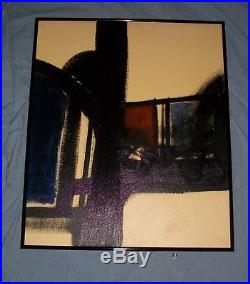
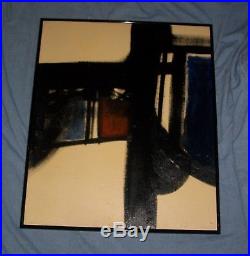
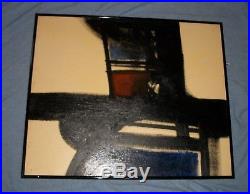
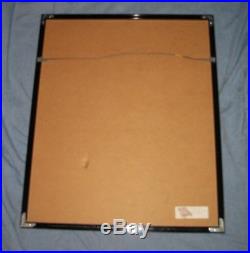
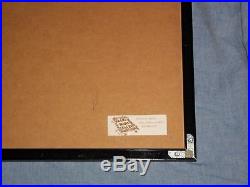
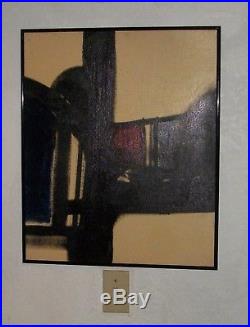
IT HAS NEVER MADE SENSE TO ME WHY AN ARTIST WOULD CREAT A WORK THEN NOT SIGN IT OR SIGN IT ILLEGIBLY THEY MUST NOT THINK TOO MUCH OF THEIR OWN WORK OR DO THEY THINK TOO MUCH OF THEMSELVES??? NONETHELESS HERE IS A GREAT MID CENTURY MODERN EARLY IMPRESSIONISM LINEAR / CUBISM OIL ON BOARD PAINTING UNSIGNED ANY CLUES?
UNKNOWN ARTIST OIL ON BOARD PAINTING MCM MID CENTURY MODERN RETRO HOME DECOR VTG. OIL ON BOARD PAINTING MCM MID CENTURY MODERN RETRO HOME DECOR VTG. We welcome any comments, questions, or concerns. WE ARE TARGETING A GLOBAL MARKET PLACE. Thanks in advance for your patronage.
Please Be sure to add WDG to your. NOW FOR YOUR VIEWING PLEASURE. EUGENE SWEARINGEN ORIGINAL ART / OA.MID CENTURY MODERN EARLY IMPRESSIONISM LINEAR / CUBISM OIL ON BOARD PAINTING MEASURES ABOUT 20" X 24". Oklahoma hall of Fame Induction Year - 1973. Oklahoma Connection - Swearingen is a graduate of Oklahomas Perry High School. Eugene Swearingen was named Downtown Tulsa Unlimiteds Man of the Year in 1969 and was inducted into Oklahoma State Universitys Hall of Fame in 1970. He is not only an outstanding citizen of the City of Tulsa, but of the State of Oklahoma...
He has shown outstanding leadership in the field of business and finance as in many civic activities. Eugene Laurrel Swearingen was born in Nebraska and graduated from high school in Perry, Oklahoma before receiving his degree from Oklahoma State University in 1941. Serving as a Navy officer from 1943 to 1946, he earned his M. In Economics in 1948, again from OSU. Seven years later, he earned his Ph.
In Economics from Stanford University. He began his career with the National Bank of Tulsa in 1968 and served as President, Chief Executive Officer and Chairman of the Board while there. In 1976, Governor David Boren appointed Dr. Swearingen as a member of the Oklahoma State Regents for Higher Education. Mid-century modern is a term that describes mid20th century developments in interior, product, and graphic design, architecture, and urban development from roughly 1933 to 1965.
The term, employed as a style descriptor as early as the mid-1950s, was reaffirmed in 1983 by Cara Greenberg in the title of her book, Mid-Century Modern: Furniture of the 1950s (Random House), celebrating the style that is now recognized by scholars and museums worldwide as a significant design movement. Architecture Detail of Copan, a Niemeyer building in São Paulo, Oscar Niemeyer The Mid-Century modern movement in the U.
Was an American reflection of the International and Bauhaus movements, including the works of Gropius, Florence Knoll, Le Corbusier and Ludwig Mies van der Rohe. Though the American component was slightly more organic in form and less formal than the International Style, it is more firmly related to it than any other. Brazilian and Scandinavian architects were very influential at this time, with a style characterized by clean simplicity and integration with nature.Like many of Wright's designs, Mid-Century architecture was frequently employed in residential structures with the goal of bringing modernism into America's post-war suburbs. This style emphasized creating structures with ample windows and open floor plans, with the intention of opening up interior spaces and bringing the outdoors in. Many Mid-century houses utilized then-groundbreaking post and beam architectural design that eliminated bulky support walls in favor of walls seemingly made of glass. Function was as important as form in Mid-Century designs, with an emphasis placed specifically on targeting the needs of the average American family.
Eichler Homes Foster Residence, Granada Hills In Europe the influence of Le Corbusier and the CIAM resulted in an architectural orthodoxy manifest across most parts of post-war Europe that was ultimately challenged by the radical agendas of the architectural wings of the avant-garde Situationist International, COBRA, as well as Archigram in London. A critical but sympathetic reappraisal of the internationalist oeuvre, inspired by Scandinavian Moderns such as Alvar Aalto, Sigurd Lewerentz and Arne Jacobsen, and the late work of Le Corbusier himself, was reinterpreted by groups such as Team X, including structuralist architects such as Aldo van Eyck, Ralph Erskine, Denys Lasdun, Jorn Utzon and the movement known in the United Kingdom as New Brutalism. Pioneering builder and real estate developer Joseph Eichler was instrumental in bringing Mid-Century Modern architecture ("Eichler Homes") to subdivisions in the Los Angeles area and the San Francisco Bay region of California, and select housing developments on the east coast. George Fred Keck, his brother Willam Keck, Henry P. Glass, Ludwig Mies van der Rohe, and Edward Humrich created Mid-Century Modern residences in the Chicago area.Mies van der Rohe's Farnsworth House is extremely difficult to heat or cool, while Keck and Keck were pioneers in the incorporation of passive solar features in their houses to compensate for their large glass windows. Industrial design Scandinavian design was very influential at this time, with a style characterized by simplicity, democratic design and natural shapes.
Glassware (Iittala Finland), ceramics (Arabia Finland), tableware (Georg Jensen Denmark), lighting (Poul Henningsen Denmark), and furniture (Danish modern) were some of the genres for the products created. In America, east of the Mississippi, the American-born Russell Wright, designing for Steubenville Pottery, and Hungarian-born Eva Zeisel designing for Red Wing Pottery and later Hall China created free-flowing ceramic designs that were much admired and heralded in the trend of smooth, flowing contours in dinnerware. On the West Coast of America the industrial designer and potter Edith Heath (19112005) founded Heath Ceramics in 1948. The company was one of the originally numerous California pottery manufacturers that had their heyday in post-war USA, and produced Mid-Century modern ceramic dish-ware.
Edith Heath's "Coupe" line remains in demand and has been in constant production since 1948, with only periodic changes to the texture and color of the glazes. Graphic design Printed ephemera documenting the mid-century transformations in urban development, architecture and design include Linen Type postcards from the 1930s to the early 1950s. They consisted primarily of national view-cards of North American cities, towns, buildings, monuments and civil and military infrastructures. Mid-century Linen Type postcards came about through innovations pioneered through the use of offset lithography.
The cards were produced on paper with a high rag content, which gave the postcard a fabric type look and feel. At the time this was a less expensive process. Along with advances in printing technique, Linen Type cards allowed for very vibrant ink colors. The encyclopedic geographic iconography of mid-century Linen Type images suggests popular middle class attitudes about nature, wilderness, technology, mobility and the city during the mid-20th century.
Curt Teich in Chicago was the most prominent and largest printer and publisher of Linen Type postcards pioneering lithography with his "Art Colortone" process. Other large publishers include Stanley Piltz in San Francisco, who established the "Pictorial Wonderland Art Tone Series", Western Publishing and Novelty Company in Los Angeles and the Tichnor Brothers in Boston. The printing of mid-century Linen Type postcards began to give way in the late 1950s to Kodachrome and Ektachrome type glossy color prints. THIS PICTURE FOR DISPLAY ONLY.DO NOT BE TOO PERSNICKETY. Please leave feedback when you have received the item and are satisfied. Our goal is for 5-star service.
We want you to be a satisfied, return customer. Please express any concerns or questions.
More pictures are available upon request. Please Check out our other items. WE like the curious and odd. The item "EUGENE SWEARINGEN OIL ON BOARD PAINTING MID CENTURY MODERN RETRO HOME DECOR VTG" is in sale since Sunday, December 10, 2017. This item is in the category "Collectibles\Vintage, Retro, Mid-Century\1960s".
The seller is "cbenhob" and is located in Jenks, Oklahoma. This item can be shipped worldwide.
- Country/Region of Manufacture: United States